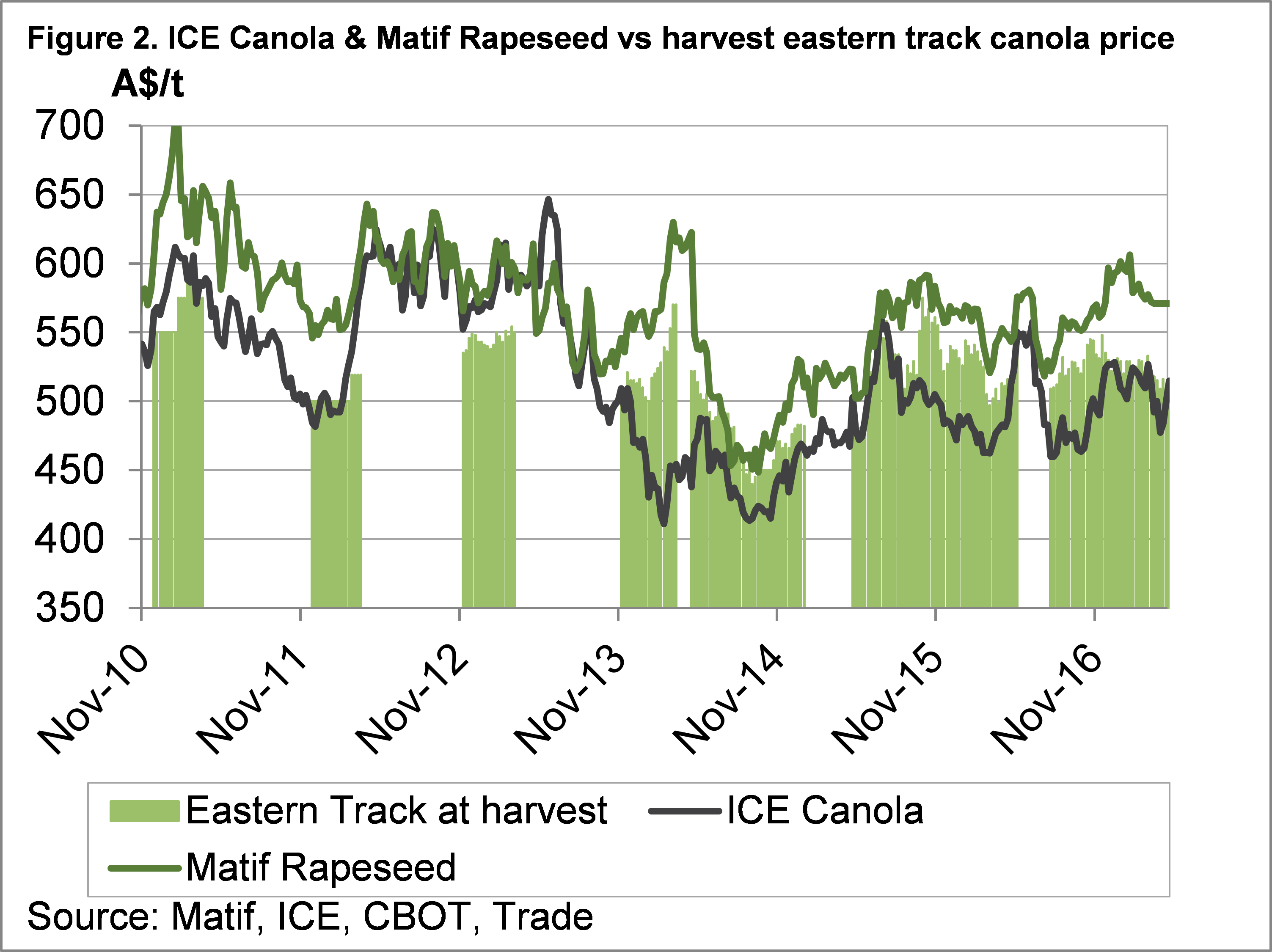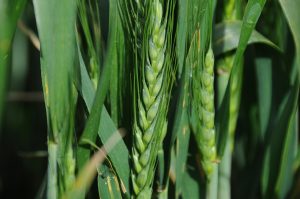We’ve seen that US grain growers are planting more soybeans this year, at the expense of corn and wheat. Last week Statistic Canada released their March report on the sowing intentions of principal field crops, and the swing towards oilseeds has hit there too. Higher canola areas in Canada has direct implications on Australian Canola prices.
In Australia canola is sown in the autumn and accounts for a just 10-11% of Australia winter crop area. In Canada canola is a major cash crop, is generally sown in the spring, i.e. now, as it doesn’t like being under snow, and usually accounts for 20-21% of total crop area.
The Statistics Canada report suggest growers are jumping on the oilseed bandwagon, joining US growers, with Australian growers set to mount in the coming weeks.
The area sown to canola in Canada is expected to increase almost 10% this year, hitting a new record of 9.06 million hectares. Figure 1 shows that the canola acreage is just going to surpass the levels seen back in 2012.
In Australia last year there were 2.3 million hectares sown to canola, which gives a bit of an idea why Canadian prices tend to drive the world canola market. They sow 6.7 times more country to canola than we do here.
Canadian canola yields are similar to ours, with last year’s record average yield coming in at 2.34t/ha. If we assume a yield on the extra areas at 1.5-2t/ha, the increase in canola area this year will add 1.2-1.6mmt of Canola. The increase in Canada equates to 30-40% of Australia’s canola production, all of which will be exported, and compete with Australia canola.
There is a little bit of good news for Australian growers in the Statistics Canada report. Canadian barley sowings are expected to be at their lowest level since 1965. Canada are an exporter of malt barley, so a decrease in barley area might add some much needed support to barley prices for the coming year.
What does it mean?
The last time we a saw a canola sowing this large in Canada, in 2012, prices actually held their value (figure 2) due to ordinary yields in Canada and elsewhere. As we have seen in prices recently, the large sowing hasn’t automatically been translated into lower prices.
However, as the crop goes in and develops, the market will take the risk premium out of prices unless there are some significant production problems. As discussed in the weekly summary on Friday, sowings are currently being delayed by wet weather, keeping new crop values above $490/t……for now.
Have any questions or comments?
Key Points
- Canadian canola plantings are expected to increase nearly 10% this year as weak cereal prices see growers swing to oilseeds.
- The increase in canola sowing will see a large increase in export supplies if there is a good season in Canada.
- The big planting is likely to see canola prices weaken as the season progresses and supply risk decreases.
Click on graph to expand
Click on graph to expand
Data sources: Statistic Canada, ICE, Mecardo













